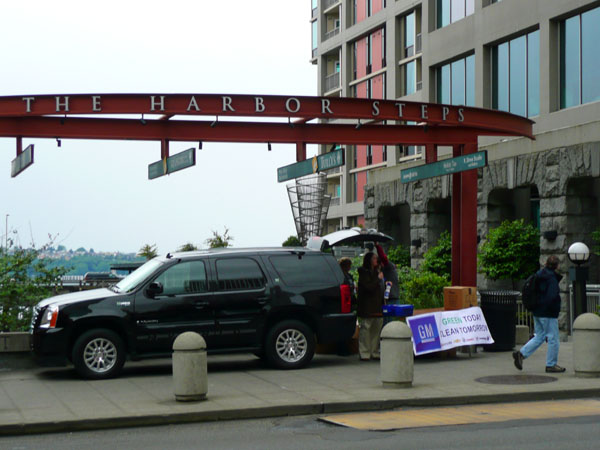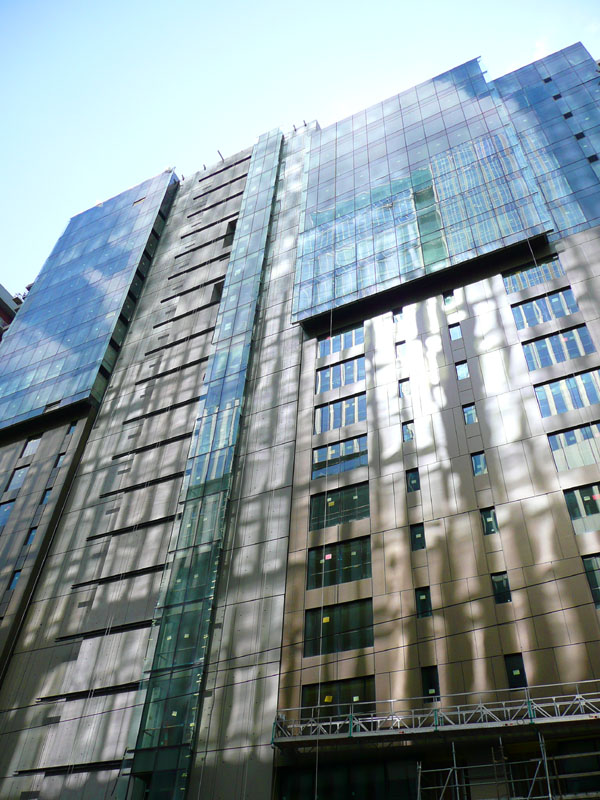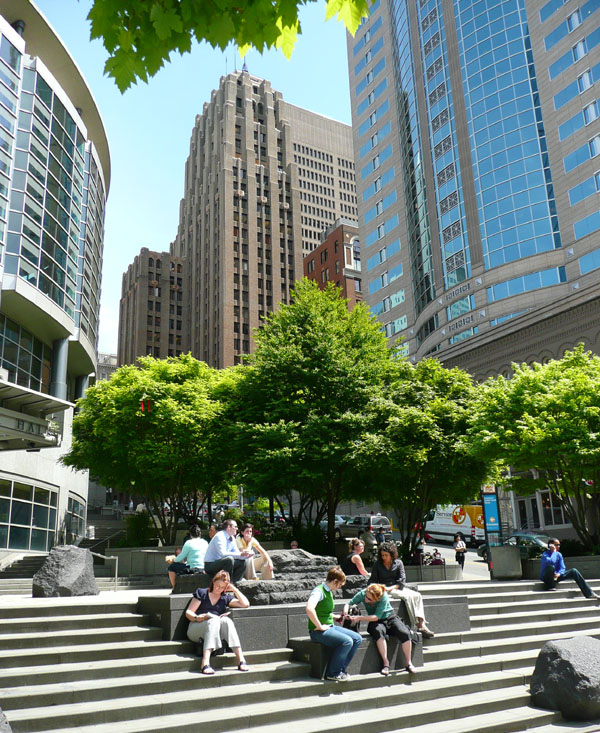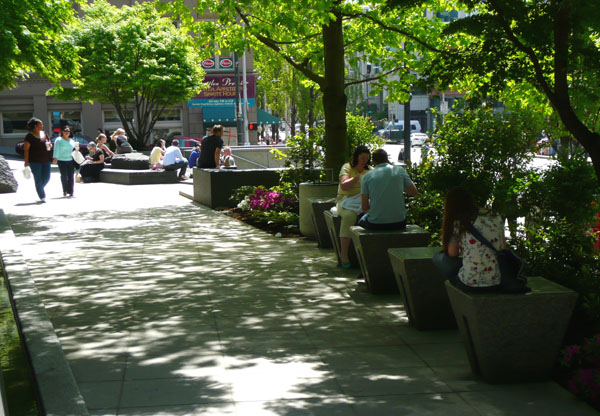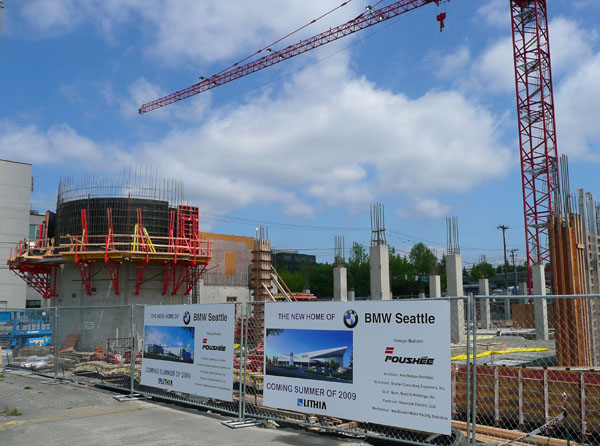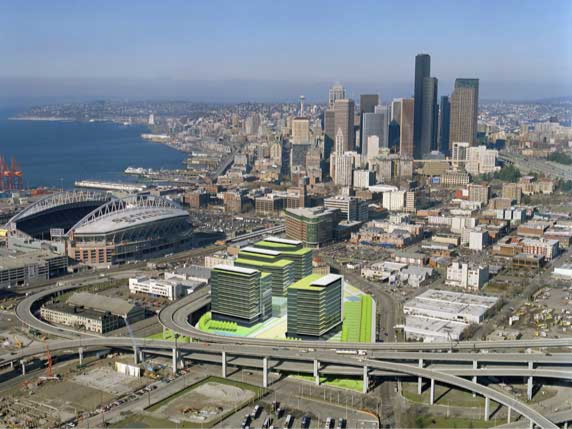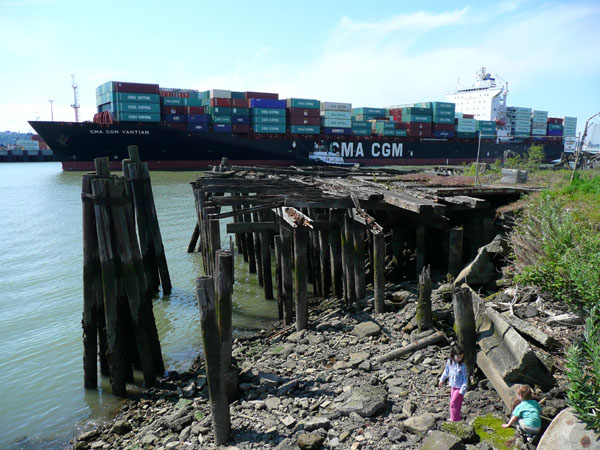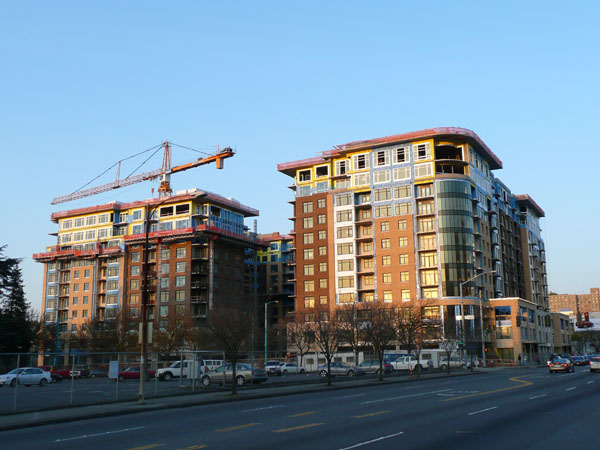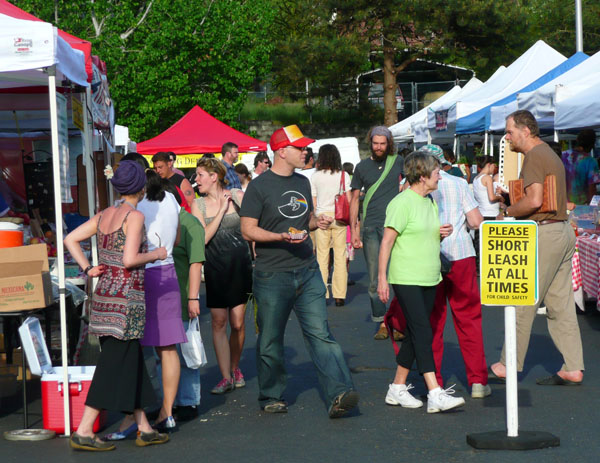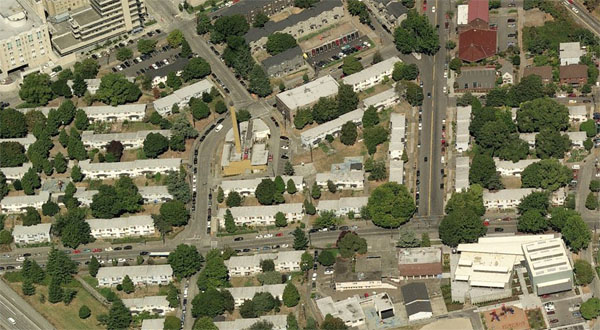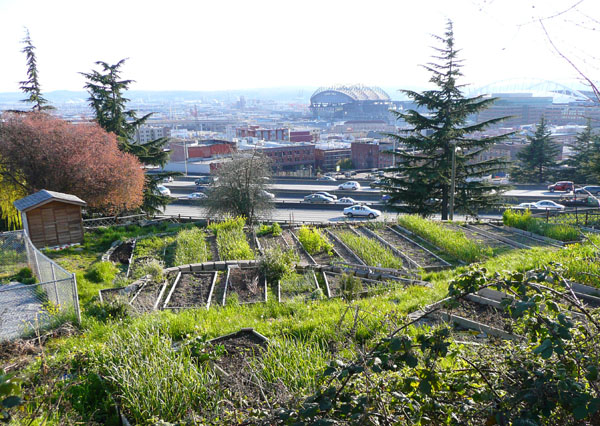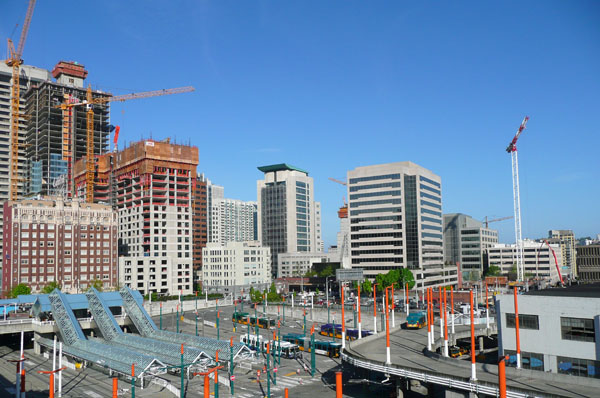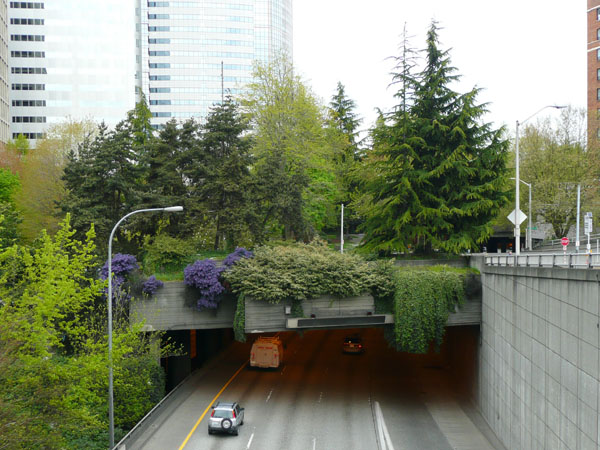Dear Liveable Seattle Movement People:
Thank you for paying attention to what’s going on in our city. I agree with you that we need to be thoughtful about development and growth. At first blush, there would seem to be much we agree on regarding urban livability and sustainability. But after taking a close look at your literature, I have actually found quite a lot with which to disagree. In particular, I believe that several of your claims regarding the negative impacts of density are both intellectually dishonest and morally irresponsible. Until now I’ve been inclined to just ignore you. But apparently there are many Seattlites who listen to what you say. So alas, I am compelled to take the time to write this (sigh… precious time I will never get back…).
Let’s start with your paper entitled “Seattle Housing Capacity Exceeds Three Times Anticipated Growth.” Is 3X capacity that unusual for cities, and is it unprecedented in Seattle? I believe the answer is no to both of those questions, so why all the excitement? Is this a brand new discovery that all the planning policy wonks have missed, or perhaps are even trying to hide? No, I think not. I suspect that you’re excited because you are opposed to pretty much any upzoning in Seattle, and you believe that this so-called “overzoned” situation is the perfect logical justification of your position. You believe you have struck gold. And you believe you can even further bolster your position by arguing that overzoning is not only unneeded, but harmful, claiming that “overzoning contributes to lack of affordable housing and sprawl.”
So then, how in the world could allowing more people to live in the city possibly contribute to more people living outside of the city (i.e. sprawl)? The primary explanation you give is that when higher density housing is built, families with children who don’t like that type of housing are forced to go find what they want out in the burbs. This can happen, but it is not nearly the whole picture. The gaping flaw in your argument is that it neglects to account for the people who do end up living in the higher density housing. If zoning were such that new high-density housing could not be built, then all those people would end up competing with families for low-density housing, because that’s all that would be available in the city. This would reduce availabilty, drive up prices, and force far more people to seek housing outside the city — in other words, it would increase sprawl, not reduce it.
Still you conclude, “Ironically, attempts to concentrate densities end up driving sprawl. This can be seen in the large population increases in suburban areas.” Yes, density causes sprawl, and ignorance is strength! Can you not see the mathematical impossibility of your theory? And sorry, but there is a large body of research demonstrating that growth management (which almost always means increasing density in centers) reduces sprawl. (The Sightline Institute would be a good place to start doing some reading.) So where is the evidence for your theory? Or are you just making stuff up?
In your Multifamily Zoning Update document, you make analogous claims about density causing sprawl, but this time townhouses are the main boogeyman. Your criticisms of townhouse design are spot on, and there is wide agreement in the community that we can do better. But as long as people are living in these townhouses, however badly designed, they are reducing sprawl, not creating it, contrary to what you claim on page 18. Your bogus arguments about sprawl do not serve you well in supporting your case for better townhouse design.
One recurring theme in your discussion of multifamily housing is a concern for accommodating families with children. For example on page 12 you write that room for kids is “in short supply these days.” I’ll ignore the the vague and dubious nature of that quote and grant you that it’s a valid concern. However, it’s a concern, I believe, that is getting more attention than it deserves, not least because siding with the nuclear family is always a political winner. The reality is, in King County as of 2006, only 28% of all households include children under 18 years old. Across the U.S., the trend toward fewer families with children can be expected to continue. So then, roughly three quarters of housing need not be designed to provide for the special needs of children.
Seattle is loaded with single family homes already. As more multifamily housing is made available, we can expect to see households without children (e.g. empty nesters) downsizing from their single-family homes to multifamily housing. This will take demand pressure off of single-family housing, which will increase the affordability and availability of single-family homes for families with children. Yes, there are cases when new multifamily buildings take out low-density housing. But again, because more housing units are created, the net effect is to reduce overall housing demand. And don’t forget — only about one fourth of households have children.
Now back to your 3X Capacity paper. You claim that another problem with overzoning is that it leads to unfocused development, citing a Michigan State University research paper. But this paper is concerned with how overzoning in rural areas causes sprawling development in rural areas. By my interpretation it says nothing about whether or not overzoning in an urban area might lead to sprawl outside that urban area. Why do you quote from this irrelevant paper?
Perhaps it is possible, as you state, that overzoning could lead to more scattered density within the city, but it’s not clear what you even mean by that, and it’s not clear how or why it would be a problem. Could you please give a Seattle example of the sort of “pockets of density” you are so concerned about?
In my reality, upzoning in an urban area doesn’t scatter growth, but is rather a strategy to focus growth in desired areas. By your logic, if and when Seattle upzones South Lake Union, because the City will then be more overzoned, growth will become more unfocused. Do you really believe that the SLU upzone will not result in focussed growth in SLU?
Regarding infrastructure, again, I don’t see how overzoning can be a very important factor. Seattle, like most cities, has been overzoned for decades. New infrastructure is required when a city grows — whether it’s overzoned or not. In a developed city like Seattle, which would cost more, infrastructure for one highrise, or infrastructure for 20 lowrises? I don’t know the answer to that, and I suspect you don’t either. Can you please provide some evidence for your claim that “there is no way City budgets… can provide the infrastructure”? In spread out rural areas, it is well established that unfocused growth leads to higher infrastructure costs. As with your unfocused development argument noted above, here again you appear to be confused about the differences between urban and rural conditions.
Compared to your treatment of sprawl, your discussion of affordability and overzoning has more merit, though not much. It is true, as you say, that overzoning can lead to speculation and artificial price increases during building booms. But I think you have to look at this in the much bigger context of how cities develop, and the system of capitalism that drives development. As cities grow, land becomes more valuable and speculation happens. This is the way it has always been, even before zoning existed.
The question is then, can zoning mitigate speculation? The short answer would seem to be yes, on a site by site, highly localized level. But when you consider the situation regionally, things become more complicated. Because, given the population increases that know are coming, if you limit growth in one place, it’s going to pop up somewhere else, especially during booms. And if you are limiting growth in an urban center like Seattle, it’s most likely going to be driven to places where it is less environmentally sustainable (i.e. sprawl in the exurbs). As I see it, land speculation is clearly the lesser of those two evils. And in any case, any artificial price increases will be temporary, as all bubbles burst eventually.
You are also correct to point out that in upzoned areas the cheaper housing is more likely to be redeveloped, and that this can result in a localized loss of affordable housing. No doubt affordable housing is a huge issue in Seattle and in pretty much all big cities — the laws of supply and demand make it so. But limiting growth to preserve affordable housing will have the opposite effect overall, because it will limit supply and drive up prices everywhere else. All said, the only effective means we have to ensure that enough affordable housing will be provided in Seattle is government subsidy.
Now, back to your multifamily paper to address one more issue: parking. You write on page 15, “when the City allows a developer to build a building without enough parking to serve its occupants, they go take parking from the next door neighbors.” Are you saying that there are outlaw renegades who park in their neighbors’ driveways? No, though you don’t state it explicitly (because it would sount too petty?), what you’re saying is that on-street parking will become tighter. First, just to state the obvious: Seattle residents do not have a God-given right to convenient street parking. Now, as with much of your writing, there are tibits of reality here and there: yes, many small businesses rely on street parking for their customers. But what it comes down to is that in any dense city, street parking is extreme rarity. It’s not going to matter how many underground garages we build. So the choice becomes: (1) dense city, or (2) convenient street parking.
Small independent retailers have no problem thriving without street parking when population density is high enough, because people walk. And their leases become cheaper when they don’t have to cover the cost of structured parking in their buildings. Housing is also less expensive (and can often be better designed) when it’s doesn’t have to include parking. Requiring parking is blatantly contradictory to your concerns over declining affordability.
Yes, yes, we all understand that people own lots of cars, they rely on them and enjoy them, that we don’t have a widely viable mass transit alternative, and that cars aren’t going away any time soon. But we simply cannot continue to build our city for cars (I don’t have to further explain, do I?). The weaning from car-dependence will be painful to some in the short term. But in the long term, it will save far greater pain for everyone.
All in all, my sense is that your general position on urban development lacks an appreciation of both the demographic and economic processes that are fundamentally responsible. In short, you are misplacing the blame on density. We know growth is coming. You seem to not want it to come to Seattle, so then, where should it go? What is your alternative that is more environmentally and socially sustainable than densifying existing urban centers?
Ultimately, it is the economic engine of job growth that is driving housing demand, which in turn provides economic opportunity for developers. But these developers aren’t operating in a vacuum. They aren’t going to drop housing down in any random place the zoning allows it. So for example, a developer would be unlikely to put a new mixed-use building in an isolated “pocket of density” because it would not be a viable retail location. Likewise, dense housing doesn’t simply appear on a given site when it is upzoned. Most developers are very careful about choosing locations that will be in demand, and these locations tend to be where there is already plenty of action (i.e. density), like on Capitol Hill.
In the end, I have to ask: It seems to me that when all is said and done, you are in favor of stopping growth in Seattle — so why don’t you just come out say it? You won’t be arrested! Perhaps there is a good argument to be made that Seattle is already too big, that we should put growth in second tier cities, or even build brand new cities from scratch. The issues are mind-bogglingly complex and there are tons of possibilities. Surely we density cheerleaders need to be challenged, but what you’ve offered so far fails miserably.
I want to finish by expanding on my initial accusation of moral irresponsibility (since I think I’ve already pretty well covered the intellectual dishonesty bit). We are facing an unprecedented global crisis in both resource consumption and global warming. There is overwhelming evidence that dense urban development is a key strategy in mitigating this crisis. So in my view, by publicizing specious and demonstrably false critiques of density, the Livable Seattle Movement is being morally irresponsible. It’s analogous to the global warming deniers, when one piece of contrary “evidence,” whether ill-founded or not, can quite effectively muddy public perception and significantly set back progress.
It also reminds me of a typical Republican political strategy, in which simple sound byte arguments are made that appeal emotionally and seem to make common sense, such as “we’ll reduce taxes — it’s your money, after all!” Livable Seattle’s charge that density is beating up on children has a similar quality. And as I’m experiencing first hand (i.e. writing this letter), once these myths are put out there, it takes enormous amounts of energy to correct public opinion. Case in point: Is anyone still reading this?
So there you have it, Livable Seattle Movement People. As I said, I appreciate that you are paying attention and contributing to the dialogue on growth and development in Seattle. And I hope you don’t take this letter personally. If you care to write a rebuttal, I will post it here.
Sincerely,
danb

